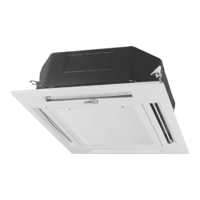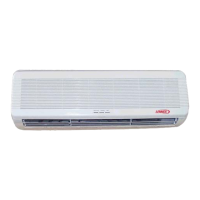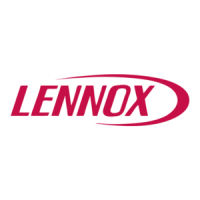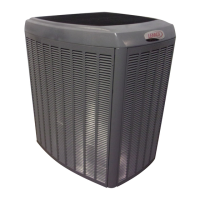22
1.- GENERAL CHARACTERISTICS
1.- DEFINITION
FREE-COOLING is a saving system in the cooling cycle, this makes the unit take air from the outside to take
advantage of its energy, this system acting as a first cold stage.
It is a saving energy system that's why many countries regulations recommended and others put under an obligation
to install a freecooling system with the unit.
2.- TYPES OF FREECOOLING.
In order to outside air parameters which has to be measured, the types are:
- Thermostatic freecooling :
Measures and compares the outside air temperature with the temperature of the room that has to be aconditioned.
- Enthalpic freecooling :
Measures and compares the outside air enthalpy with the return air enthalpy from the room that has to be
aconditioned.
The enthalpy measures temperature and humidity of air.
3.- COMPONENTS OF FREECOOLING.
The main components are:
- Electronic control and accessories: Their function is to detect the outside and indoor air conditions, through the
probes to solve when freecooling should operate.
- The servomotor and system transmission: They manage the opening and closing the dampers.
- Adjustable dampers.
- Mixing section: Where outside and return air are mixed.
Also an return fan is available, which applies an additional static pressure on the suction and return air duct.
For more details about components and drawings see pages 26,27,28,29.
4.- OPERATION
The control compares the values of temperature/enthalpy between outside air and room air through the probes,
if it is a negative difference and the security elements allow (discharge temperature probes) then the control acts
over the servomotor, which produces the opening of the outside damper and close the return one, entering cool
outside air to the room.
The damper regulation is proportional.
If indoor air demand is not great, could be enough only the freecooling to acondition the room, if the air demand
is greater it is possible need the freecooling working and the unit working on different cooling mode stages.
5.- THERMOSTAT TERMINAL.
Depending on the type of freecooling selected, the thermostat and the electrical box supplied with the unit
will be different.
With thermostatic freecooling the thermostat supplied has the same characteristics than the one supplied
with the standard unit, except because the one for the freecooling is a programmable one.
With enthalpic freecooling the terminal is different than the one supplied with the unit VFC version, its
principal characteristics are: OFF, COOL, HEAT, AUTOMATIC.
THERMOSTAT FOR THERMOSTATIC
FREECOOLING
THERMOSTAT FOR ENTHALPIC
FREECOOLING
Enthalpic freecooling is supplied with duct sensor.
Remote ambient sensor and sensor incorporated
inside the thermostat are available as an option.
Thermostatic freecooling is supplied with sensor
incorporated inside the thermostat.
Remote duct and ambient sensor are available as
an option.
1.6.- AVAILABLE OPTIONS
FREECOOLING
COOL
AUTO
O
N
FAN
SYSTEM
AUTO
HEAT
OFF
Climatic 10

